We are about to enter a digital marketing gold rush.
The arrival of Apple’s long-awaited take on virtual reality is finally here, with Apple Vision Pro. And the VR headsets have become an overnight hit, selling out during its pre-orders despite the hefty $3,500+ price tag.
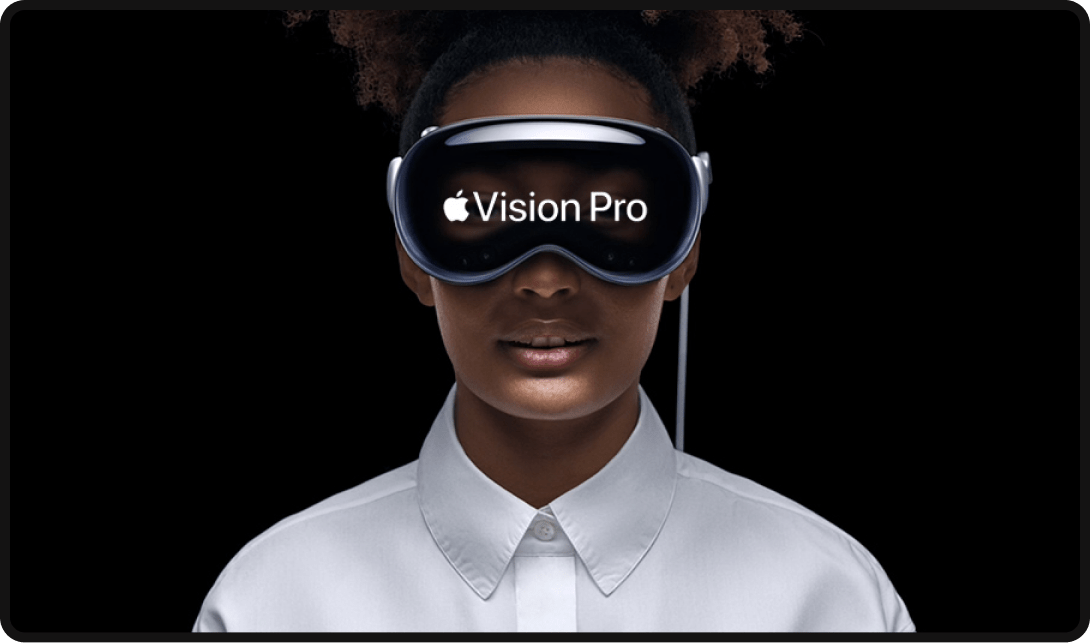
The early success of the Vision Pro has caught everyone by surprise – even Apple. But it’s an early indication of the long-term viability of technology like this, as Apple’s prioritization of augmented reality is already paying dividends.
Before Vision Pro…
Apple is a little late to the party when it comes to virtual reality. The first commercial virtual reality headset was released all the way back in 1994 – the Forte VFX1.

However, this headset (and many that came after it) were all commercial failures. The medium didn’t start to turn a corner until 2014 when Mark Zuckerberg and Facebook bought out a startup company called Oculus. And after spending $2 billion to acquire the startup, other companies started taking notice of the technology’s potential. The market began to see rapid growth and innovation, with big hitters jumping into the mix, and releases like Sony’s Playstation VR and HTC’s VIVE line over the next decade.
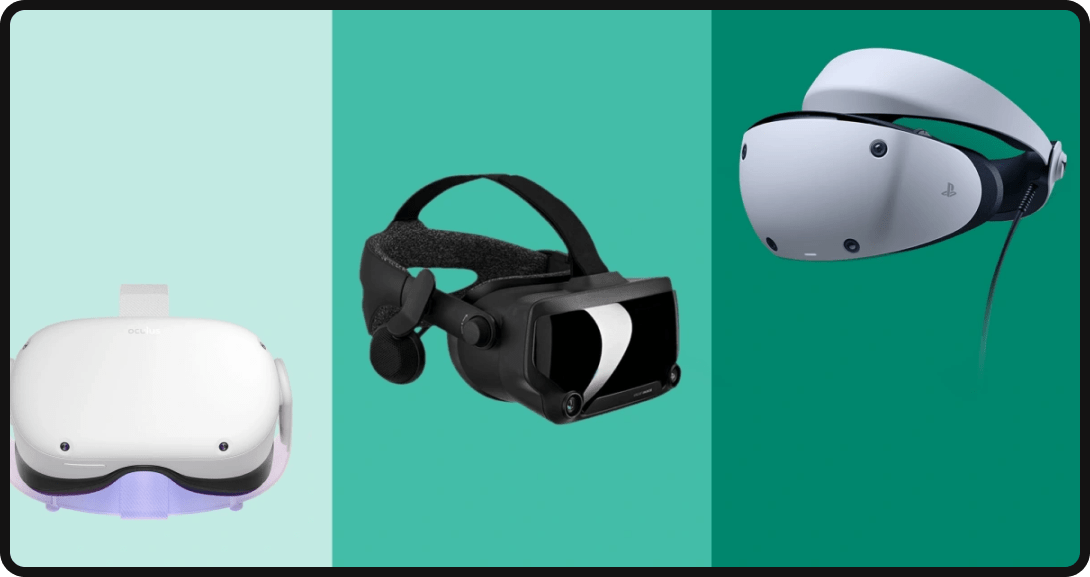
However, despite significant growth, virtual reality on a wider scale remained pretty niche. These headsets were mostly looked at as cool toys that were fun to play around in, but that was the extent of it. They were made for virtual reality enthusiasts and never provided enough to be considered for day-to-day use by your average Joe.
Apple Enters the Chat
Despite being over a decade late to the party, Apple has brought a new approach to virtual reality that has already shown the potential to propel the medium from a niche into the mainstream.
With all of the aforementioned VR headsets, there is a heavy emphasis on a fully immersive and digital experience. You’re taken into a whole new world whenever you put on one of these headsets. And while it is cool to experience, when you need to do something outside of the digital world, the headset can quickly become a hindrance.
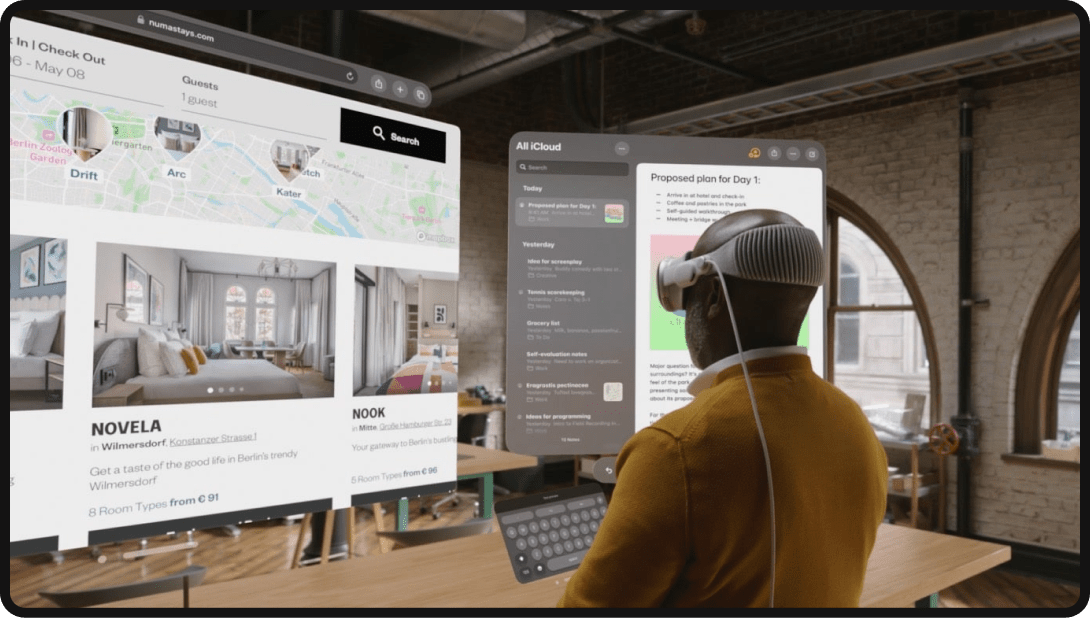
With the Vision Pro, Apple put a lot of thought into real-world applications for virtual reality. And instead of a fully virtual approach, they landed on mixed reality. This form of virtual reality heavily utilizes spatial computing technology, which seamlessly brings virtual content into the real world. Meaning you can have whole applications appear right in front of you, without inhibiting your ability to see what’s going on around you. And this fresh approach could potentially be what the medium needs as a catalyst for mass adoption, as consumers have already shown interest in using virtual reality to help improve in their day-to-day lives.
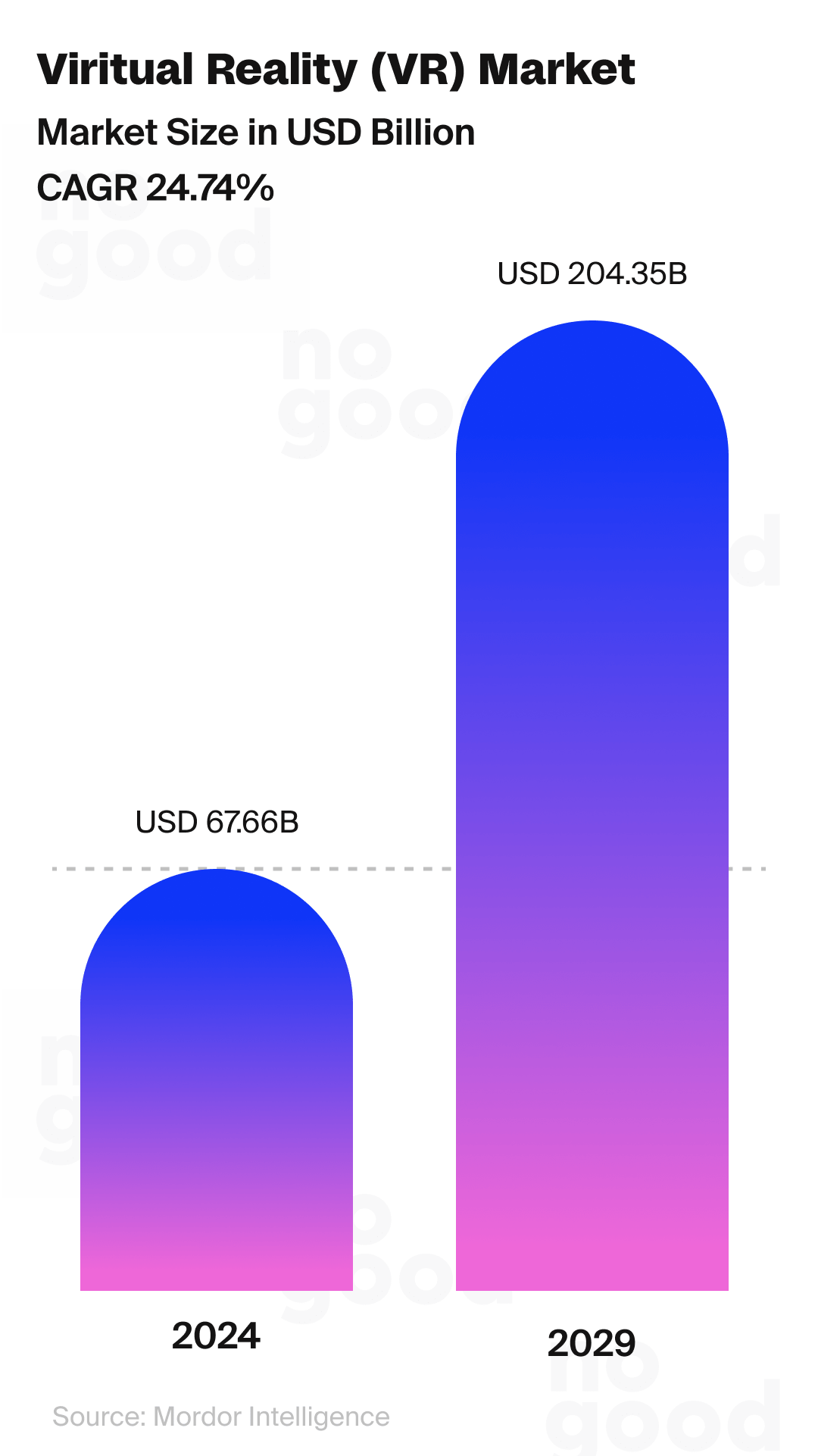
The market was anticipated to grow by nearly $150 billion over the next five years even before Apple released the Vision Pro. The founding fathers of virtual reality weren’t doing a shabby job by any stretch of the imagination. However, Apple’s emphasis on mixed reality with their approach could prove to be the medium’s missing puzzle piece. By bridging the gap between the real and digital worlds, with seamless passthrough and enough real-world use cases for many users to even warrant wearing the headset outside… Apple’s VR headset isn’t a gimmick. It’s already proven to be a valuable day-to-day tool for users.
Mass Adoption: Why Now
Looking towards the near future, with Apple reshaping the way we look at VR, other manufacturers are likely to adopt many of the key features we’ve seen on Vision Pro. And as other manufacturers start to view their VR headsets as a tool and prioritize mixed reality, users will start to integrate these headsets into their day-to-day lives.

The Vision Pro has the potential to be the iPhone of VR from a market-scale view. Smartphones existed before Apple unveiled the very first iPhone. However, they were still in their clunky, primitive form and made up a niche percentage of enthusiast cellphone users.
Recognizing the potential within the sector, Apple innovated and catalyzed the adoption of smartphone technology – whether Apple-made or competitor-made. As outlined, there are many parallels between the first iPhone and Apple’s first virtual reality headset from the state of the market, which leaves many banking on Apple to catch lightning in a bottle a second time.
A metaphorical “gold rush” from nearly every sector to adopt and leverage this technology is right around the corner. And it will be seen ten-fold when looking at content creation & consumption. Augmented reality technology puts a whole new lens on social media content… literally. And the way we engage with content is about to change permanently. With that shift, brands within this sector are going to have to adapt their approach to digital marketing.
So… what does VR advertising look like?
How is VR used in Marketing?
This technology will open up doors for marketers that would’ve never even been conceivable just a few months ago. Instead of 2D video ads showing off a product, think about immersive experiences that allow potential customers to demo products… all from the sanctity of their own homes.
We’ve already seen some brands leverage this type of technology for marketing purposes in its more primitive state. From Volvo giving users test drives in their cars through virtual reality, to Adidas promoting their outdoor gear by letting customers experience what it’s like to climb a mountain in VR.
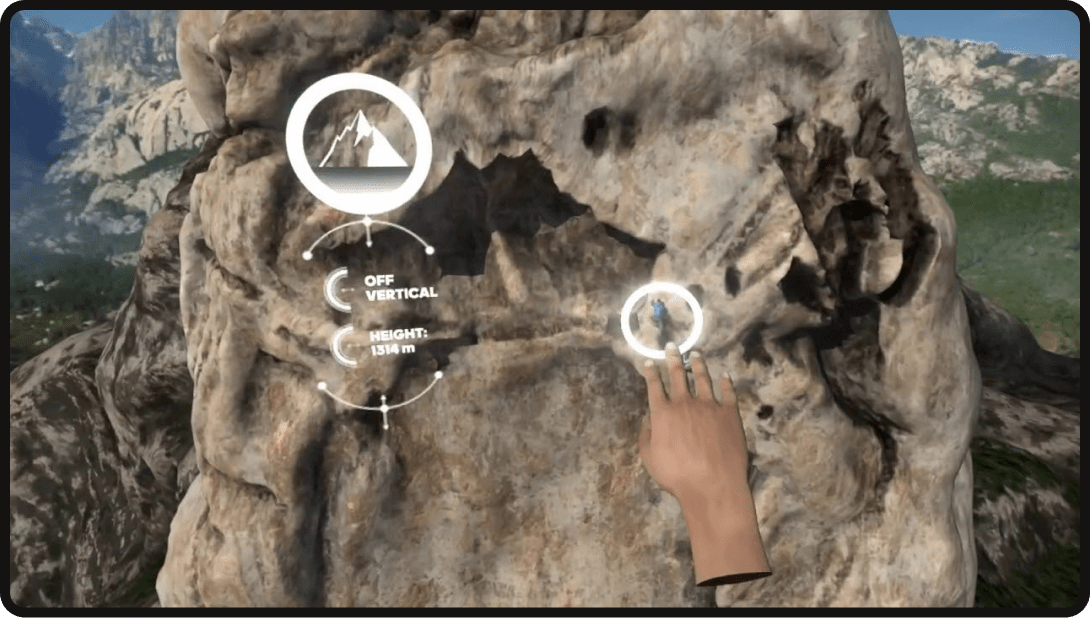
And Apple’s Vision Pro framework will take experiences like this to the next level. Instead of being transported to a fully virtualized world to experience something like this, that experience will come directly to you. With augmented reality, brands will be able to blend these virtual experiences with your real-life surroundings thanks to spatial computing technology.
The ways this technology can accentuate a marketing campaign are limitless, and it has the potential to take the brand/consumer relationship to a whole new level. And especially as users start to venture outdoors with their VR headsets, the potential is now there for brands to take the QR codes of yesteryear and morph them into augmented reality advertising pieces on billboards. This isn’t just speculative either, as we’ve already gotten an early glimpse of what Apple’s Vision Pro enables from a marketing perspective.
Early Examples of Vision Pro in Marketing
Although the Vision Pro is only a week old, a few brands have already made attempts to leverage the technology in their marketing strategy, creating some really cool experiences in the process!
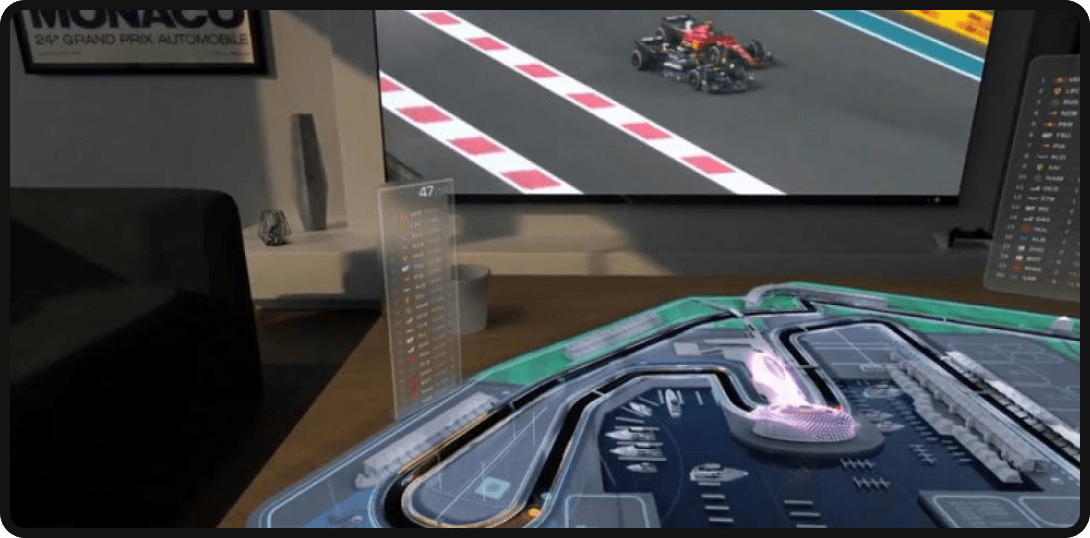
Within the realm of sports, Formula 1 is already showing how the fan experience can be taken to the next level. Using Vision Pro, they created a top-down virtual version of a race track that reacts 1-1 with the live TV broadcast. This gives you a dynamic view of the track that a normal television broadcast just isn’t capable of providing.
Coupled with live stats as well, this fan experience is unparalleled. And it’s not just limited to F1.

Take for example ESPN’s live gamecast that they have on their website for the NFL. A layout like this could be transposed into a top-down augmented reality experience, coupled with play-by-play descriptions and statistics.
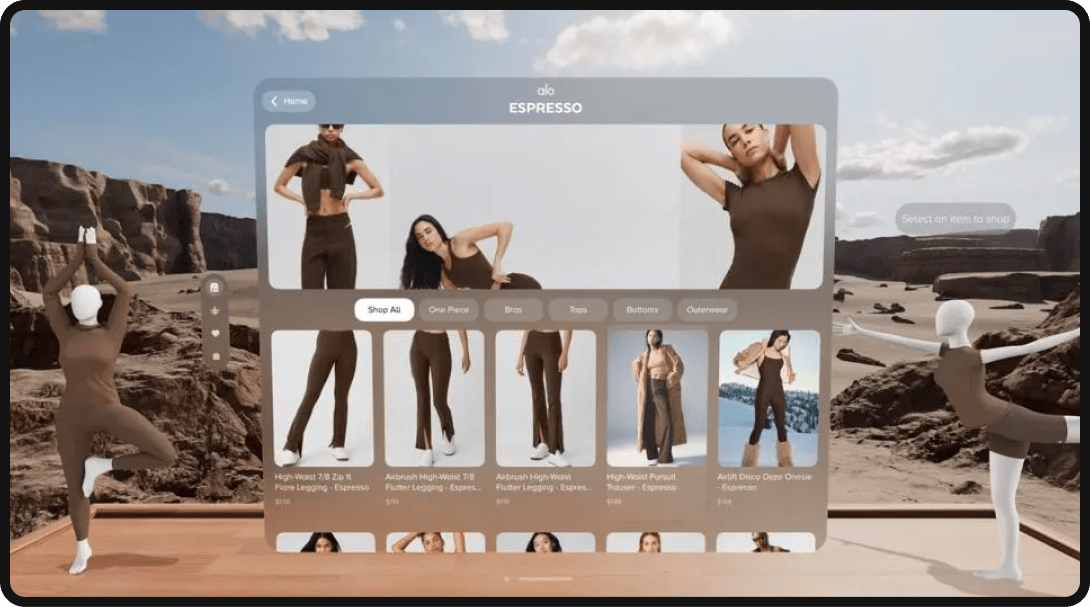
Then you have clothing brands that are developing virtual try-on experiences. With Apple’s facial avatar experience already as good as it is, full-body avatars for virtual try-on experiences like this could be adopted and used to show you exactly how a product will fit.
Not only would experiences like this be beneficial for customers, but previous experiments for virtual try-ons have already been shown to slash product return rates for companies by up to 64%. Deploying experiences like this could prove to have a positive impact and massive ROI for online clothing companies.
And these examples have all cropped up just within the first week of the Vision Pro’s release. This iteration of virtual reality is still very new, and it’s as opportune a time as ever to experiment and push the limits. That said though… how viable is this technology within marketing past the initial hype?
Is VR the future of marketing?
In its earliest stages, virtual reality has already presented a unique opportunity for brands to offer memorable consumer experiences. However, as we press forward with this technology that opportunity will quickly turn into a necessity.
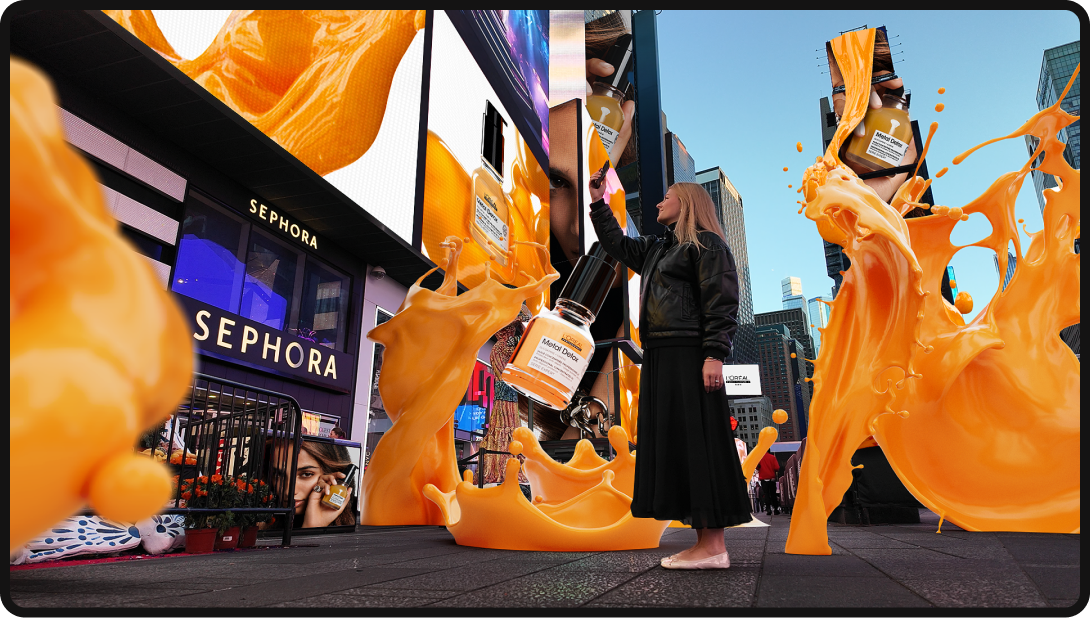
Advertisements and commercials will be exchanged for immersive experiences and augmented product demos. Instead of creating an ad showing off your product, brands will need to create an experience with their product for consumers before the sale even happens. While this technology offers a virtually limitless canvas, the task of marketing a new product will require a lot more thought – likely forcing brands to re-evaluate their go-to-market content strategy.
Though, this isn’t as daunting as it may sound.
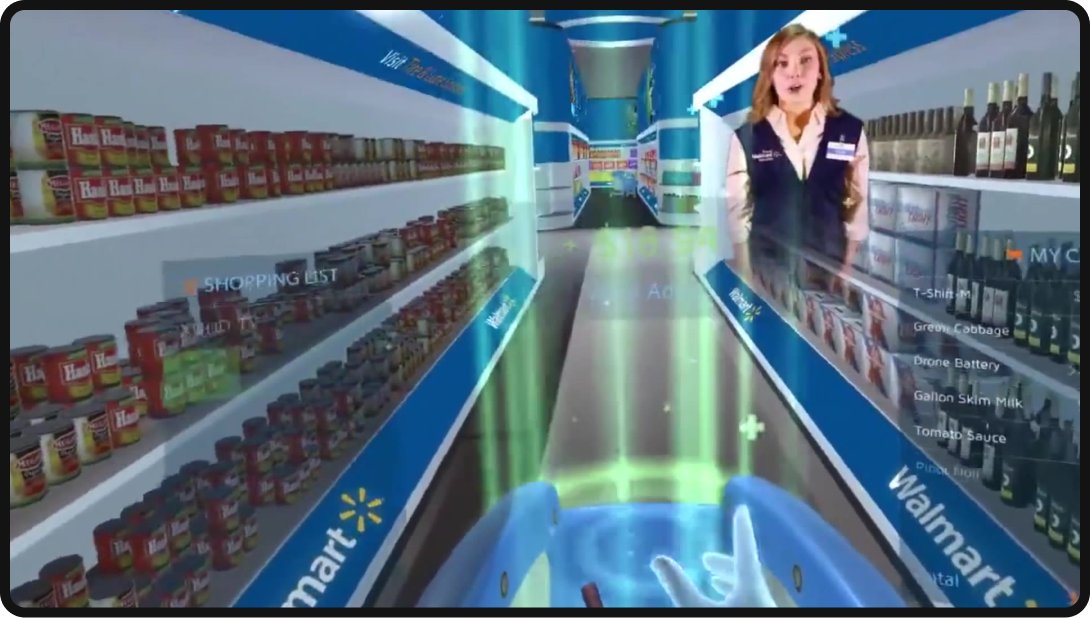
One of these VR advertising ideas can be something as simple as what Walmart did, allowing users to view items’ nutrition details and prices through a virtual reality marketplace shopping experience. Memorability will be the core driver for successful virtual reality advertisements. And it’s this potential for memorability that is driving a lot of the growth for virtual reality from a market viability lens.
What are the disadvantages of VR marketing?
Though the benefits of AR and VR in marketing are plentiful, there are a few caveats that we’d be remised if we didn’t mention…

While, as we’ve already outlined, there is potential here for some incredibly unique marketing initiatives, this medium has the potential to become a double-edged sword. Despite leaving more room for experimentation, a VR advertising strategy costs a lot more to develop fully 360-degree VR experiences than it does to develop a 2D ad.
That cost can easily be recouped if your experience hits for users, but if it doesn’t hit, it becomes a major sunken cost for any brand.

This technology will likely usher in a high-risk-high-reward digital advertising era, where brands will have to be much more conscious about how many campaigns they run given the hike in production cost. With less room for error, there comes more room for experimentation though — and if your brand’s experience hits, it will hit. As opposed to shoving an intrusive ad in someone’s face and hoping they’ll buy your product, you’re offering them an opportunity to play with and explore your brand and product before they even buy in.

Providing that value will have a much greater impact on conversions than any piece of 2D advertising your brand deploys.
5 Ways VR Will Change Marketing
Social Media: Social platforms as we know them will be changed forever by this technology. Each user will be able to curate their own customized AR experiences like never before, and methods for engaging with other users will only become more elaborate and awesome.
Experience-based Advertising: Advertising companies will trade commercials for immersive, memorable experiences that leave a long-lasting impression on potential customers.
Virtual Product Demos: From test drives to clothing try-on experiences, brands will be able to create demos of their products for potential buyers.
Augmented Ads: Gone are the days when you’ll need to scan QR codes to view an ad. Augmented ad content will show up on things like billboards, and you’ll have the ability to directly interact with them.
Brand -> Buyer Accessibility: It will be easier than ever for brands to get their products in front of new potential buyers, as you’ll be able to easily and effectively market to them wherever they are.
The Future of Digital Marketing
Marketers have been gifted an empty canvas with room to experiment on initiatives that wouldn’t have even been conceivable five years ago. Whether Apple completely revolutionizes the digital marketing landscape with Vision Pro or has a more minimal impact than potentially outlined in this article, one thing is for certain: virtual reality will play a role in marketing moving forward.





